
Star Ocean is a 1996 action role-playing game developed by tri-Ace and published by Enix for the Super Famicom. The first game in the Star Ocean series, it was released only in Japan in July 1996, and was the first game developed by tri-Ace, consisting of staff that had previously left Wolf Team due to being unhappy with the development process for Tales of Phantasia with Namco in 1995. The game used a special compression chip in its cartridge to compress and store all of the game's data due to possessing graphics that pushed the limits of the Super Famicom. Additionally, the game had voice acting for the game's intro and voice clips that played during the game's battle gameplay, a rarity for games on the system.
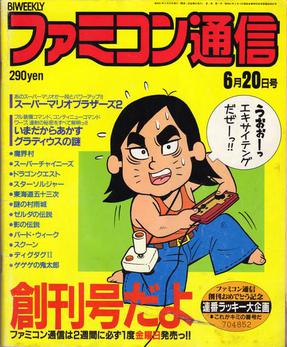
Famitsu, formerly Famicom Tsūshin, is a line of Japanese video game magazines published by Kadokawa Game Linkage, a subsidiary of Kadokawa. Famitsu is published in both weekly and monthly formats as well as in the form of special topical issues devoted to only one console, video game company, or other theme. Shūkan Famitsū, the original Famitsu publication, is considered the most widely read and respected video game news magazine in Japan. From October 28, 2011, the company began releasing the digital version of the magazine exclusively on BookWalker weekly.
1986 saw many sequels and prequels in video games, such as Super Mario Bros. 2, along with new titles such as Arkanoid, Bubble Bobble, Castlevania, Dragon Quest, Ikari Warriors, The Legend of Zelda, Metroid, Out Run and R.B.I. Baseball. The year's highest-grossing arcade video games were Hang-On in Japan, Hang-On and Gauntlet in the United States, and Nemesis (Gradius) in London. The year's best‑selling home system was the Nintendo Entertainment System (Famicom) for the third year in a row, while the year's best-selling home video games in Western markets were Super Mario Bros. in the United States and Yie Ar Kung-Fu in the United Kingdom.
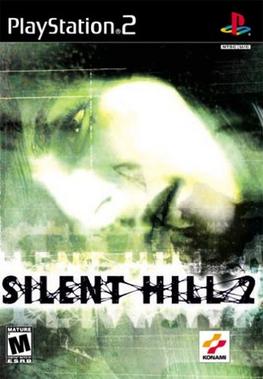
Silent Hill 2 is a 2001 survival horror game developed by Team Silent, a group in Konami Computer Entertainment Tokyo, and published by Konami. The game was released from September to November, originally for the PlayStation 2. The second installment in the Silent Hill series, Silent Hill 2 centers on James Sunderland, a widower who journeys to the town of Silent Hill after receiving a letter from his dead wife. An extended version containing an extra bonus scenario, Born from a Wish, and other additions was published for Xbox in December of the same year. In 2002, it was ported to Microsoft Windows and re-released for the PlayStation 2 as a Greatest Hits version, which includes all bonus content from the Xbox port. A remastered high-definition version was released for the PlayStation 3 and Xbox 360 in 2012 as part of the Silent Hill HD Collection.

Clock Tower is a survival horror point-and-click adventure video game series created by Hifumi Kono. The series includes four games in total. The first entry, Clock Tower (1995), was developed by Human Entertainment and released on the Super Famicom in Japan. Human Entertainment developed two more entries, Clock Tower (1996) and Clock Tower II: The Struggle Within (1998), which were released on the PlayStation and localized outside Japan. The fourth and most recent title, Clock Tower 3 (2002), was co-produced by Capcom and Sunsoft for the PlayStation 2. Gameplay in the series generally involves the player hiding and escaping from enemy pursuers without any weapons to defeat them. Scissorman is a reoccurring antagonist and sometimes the sole enemy in the game.

Clock Tower II: The Struggle Within, known in Japan as Clock Tower: Ghost Head, is a horror-themed adventure game developed by Human Entertainment and released for the PlayStation in 1998. It is the third game in the Clock Tower series. The story follows 17-year-old Alyssa Hale who occasionally is possessed by an alter ego named Mr. Bates. The player must guide Alyssa through various environments, altering between her normal and twisted personality, to uncover the secrets of her and her family's past.

ClockWerx is a puzzle video game created by Callisto Corporation that was released in 1995. The game was originally released by Callisto under the name Spin Doctor. Later, with some gameplay enhancements, it was published by Spectrum HoloByte as Clockwerx, which was endorsed by Alexey Pajitnov according to the manual. A 3DO Interactive Multiplayer version was planned but never released.

Clock Tower 3 is a survival horror video game co-produced by Capcom and Sunsoft for the PlayStation 2. Released in 2002, it is the fourth installment in the Clock Tower series, and the first and only video game directed by Japanese film director Kinji Fukasaku. The plot and characters have very little relation to the previous Clock Tower games. The story follows 14-year-old Alyssa Hamilton who is part of a family lineage of female warriors who travel through time to defeat evil spirits. Alyssa travels from her time in 2003 London to the 1940s and 1960s in order to defeat these "Entities" and bring peace to troubled souls.
Hect (ヘクト) or Hector was a Japanese video game developer and publisher. It had a Virtual Boy game in development, entitled Virtual Battle Ball; however, it was eventually canceled.

Fatal Frame is a survival horror video game developed by Tecmo for the PlayStation 2. The first installment in the Fatal Frame / Project Zero series, it was released in 2001 in Japan and 2002 in North America and Europe. An enhanced port for the Xbox was released in 2002 in North America and 2003 in Japan and Europe. The game was published for both systems by Tecmo in Japan and North America. In Europe, the PlayStation 2 version was published by Wanadoo, and the Xbox version by Microsoft. It was re-released in North America on the PlayStation Network in 2013.

Street Fighter II Turbo: Hyper Fighting is a competitive fighting game released by Capcom for arcades in 1992. It is the third arcade version of Street Fighter II, part of the Street Fighter franchise, following Street Fighter II: Champion Edition, and was initially released as an enhancement kit for that game. Released less than a year after the previous installment, Turbo introduced a faster playing speed and new special moves for certain characters, as well as further refinement to the character balance.

Clock Tower, known in Japan as Clock Tower 2, is a survival horror point-and-click adventure game developed by Human Entertainment and released for the PlayStation in 1996. It is the second game in the Clock Tower series after the original Clock Tower, which was released exclusively in Japan for the Super Famicom one year prior. The story takes place in Norway and follows a variety of characters as they attempt to survive the return of Scissorman and uncover the mystery of his seemingly immortal state. The scenarios encountered and endings vary widely based upon the player's actions.

The Best is a Sony PlayStation budget range in Japan and parts of Asia. Similar budget ranges include Greatest Hits in North America, Essentials in PAL regions and BigHit Series in Korea.
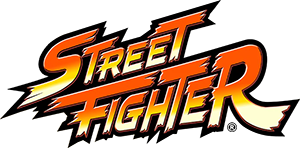
Street Fighter is a Japanese media franchise centered on a series of fighting games developed and published by Capcom. The first game in the series was released in 1987, followed by six other main series games, various spin-offs and crossovers, and numerous appearances in other media. Its best-selling 1991 release Street Fighter II established many of the conventions of the one-on-one fighting genre.
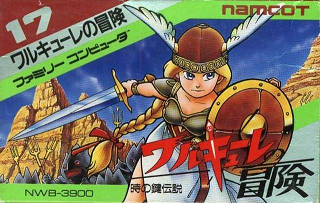
Valkyrie no Bōken: Toki no Kagi Densetsu is a video game developed and published by Namco. It was released in Japan for the Family Computer on August 1, 1986. It was also released for the Virtual Console of multiple Nintendo consoles, for the Wii on March 20, 2007, for the Nintendo 3DS on September 4, 2013 and for the Wii U on February 4, 2015.
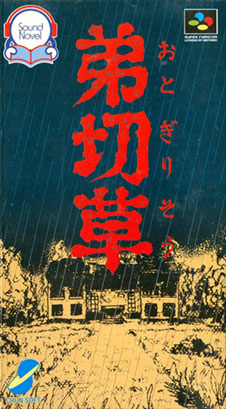
Otogirisō is a visual novel game produced and published by Chunsoft. Marketed by the company as a "sound novel" rather than a video game, it is the progenitor of the developer and publisher's sound novel series and of the format of electronic entertainment now usually known generically as a visual novel. Koichi Nakamura conceived the title after showing his work on the Dragon Quest role-playing video games to a girl he was dating. On finding she did not enjoy them, he was encouraged to make a video game that he described as "for people who haven't played games before." Influenced by the early survival horror game Sweet Home, he developed it as a horror-themed interactive story. Released in March 1992, the game sold over 400,000 copies in Japan, including over 300,000 for Super Famicom and 100,000 for PlayStation.
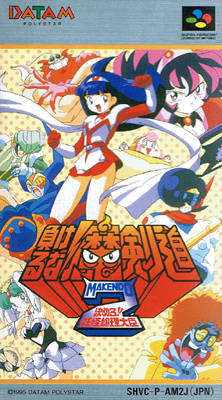
Makeruna! Makendō 2: Kimero Youkai Souri, also known as Kendo Rage 2, is a 1995 fighting game released exclusively in Japan for the Super Famicom by Datam Polystar. It was re-released for the PlayStation.

Remothered: Tormented Fathers is a 2018 survival horror video game created and directed by Chris Darril, developed by Stormind Games and published by Darril Arts. The game was originally released digitally on PlayStation 4, Xbox One, and Microsoft Windows. A Nintendo Switch version was released digitally in 2019, in collaboration with developer Dico Co., Ltd. The game was also released physically in October 2019 by publisher Soedesco.
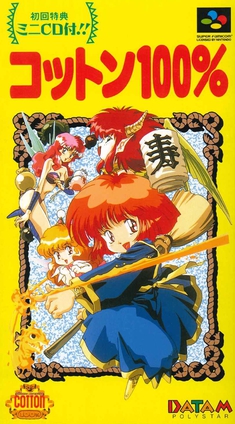
Cotton 100% is a 1994 scrolling shooter video game developed by Success and originally published by Datam Polystar for the Super Famicom. The second installment in the Cotton franchise, it is a follow-up to Cotton: Fantastic Night Dreams. In the game, players assume the role of the titular young witch who, alongside her fairy companion Silk, sets out on her broomstick on a quest to defeat several monsters and get her Willow candy. Its gameplay is similar to the first game, mainly consisting of shooting mixed with role-playing game-esque elements using a main four-button configuration.



















